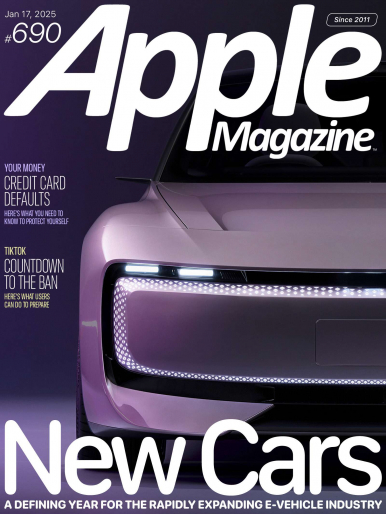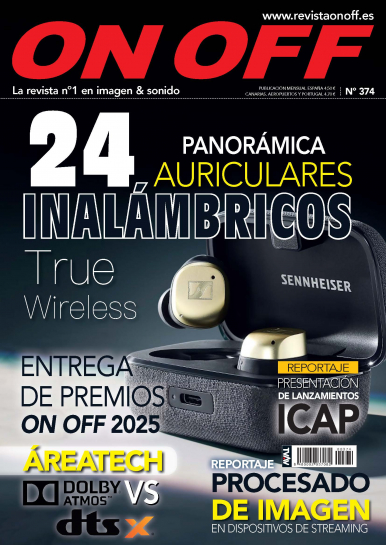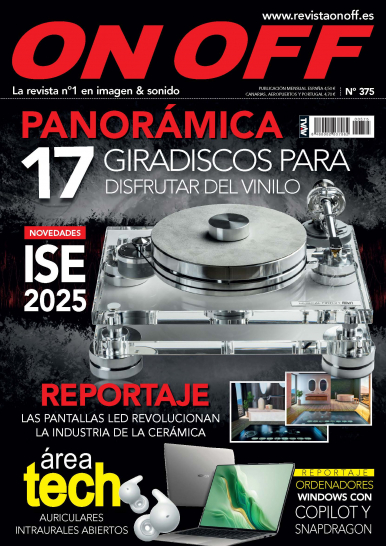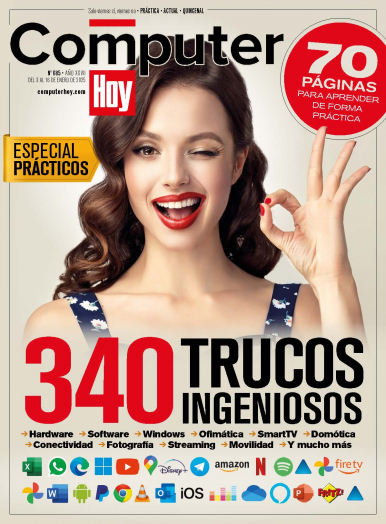
Estás filtrando por
Se encontraron 1556 resultados en recursos

C1 Modem A Groundbreaking Revolution Paving The Way To Apple's Future.
Apple $500 Billion Investment Inside The Houston Manufacturing Hub.
Amazon Aws Fuels Logistics Company To 10 Us Cities.
Fuente:
Pasa La Página
Formatos de contenido:
Publicaciones periódicas
Compartir este contenido
AppleMagazine - 28/02/25
Copia el enlace o compártelo en redes sociales

AppleMagazine - 07/03/25
Invites: A handy new iPhone App for event planning.
Processing power. Mac Studio & Macbook Air, nwe heights in performance with the M3 and M4 chips.
2025 Line Up. New ipads unveiled, Apple launched A16 and Air M3 Models.
Fuente:
Pasa La Página
Formatos de contenido:
Publicaciones periódicas
Compartir este contenido
AppleMagazine - 07/03/25
Copia el enlace o compártelo en redes sociales

AppleMagazine - 21/02/25
Special edition. iPhone 16e: The newest member of the family with AI-Enhanced processing.
Demand soars. Texas virtual power plants, a pilot program looks to bolster energy grid.
Huawei. Tri-foldable smarphone, a show of defiance amid Us curbs.
Fuente:
Pasa La Página
Formatos de contenido:
Publicaciones periódicas
Compartir este contenido
AppleMagazine - 21/02/25
Copia el enlace o compártelo en redes sociales

AppleMagazine - 14/02/25
Proxima New Bluetooth & Wi-Fi Tech To Reshape The Wireless Industry.
Automation & AI Latino Workers Working To Overcome A Technological Divide.
Deepseek Government Devices House Lawmakers Push To Ban China's AI App From Gov.
Fuente:
Pasa La Página
Formatos de contenido:
Publicaciones periódicas
Compartir este contenido
AppleMagazine - 14/02/25
Copia el enlace o compártelo en redes sociales

AppleMagazine - 14/03/25
MacBook Air The Power Of The M4 Chip Meets Ultra-Portability.
Spacex Starship Flight 8 The Road To Full Rocket Reusability.
Apple TV+ Beyond Severance The Most Popular Shows For The Family's Weekend.
Fuente:
Pasa La Página
Formatos de contenido:
Publicaciones periódicas
Compartir este contenido
AppleMagazine - 14/03/25
Copia el enlace o compártelo en redes sociales

AppleMagazine - 17/01/25
New Cars A Defining Year For The Rapidly Expanding E-Vehicle Industry.
Your Money Credit Card Defaults Here's What You Need To Know To Protect Yourself.
TikTok Countdown To The Ban Here's What Users Can Do To Prepare
Fuente:
Pasa La Página
Formatos de contenido:
Publicaciones periódicas
Compartir este contenido
AppleMagazine - 17/01/25
Copia el enlace o compártelo en redes sociales

On Off - 04/12/24
Panorámica: 24 Auriculares inalámbricos, True wireless.
Entrega de premios On Off 2025.
Áreatech: Dolby Vs. Atmos Dts x.
Reportaje: Presentación de lanzamientos.
Reportaje: Procesado de imagen en dispositivos de streaming.
Fuente:
Pasa La Página
Formatos de contenido:
Publicaciones periódicas
Compartir este contenido
On Off - 04/12/24
Copia el enlace o compártelo en redes sociales

On Off - 07/01/25
Panorámica: 17 giradiscos para disfrutar del vinilo.
Novedades ISE 2025.
Reportaje: Las pantallas led revolucionan la industria de la cerámica.
Área tech: Auriculares intraurales abiertos.
Ordenadores Windows con Copilot y Snapdragon.
Fuente:
Pasa La Página
Formatos de contenido:
Publicaciones periódicas
Compartir este contenido
On Off - 07/01/25
Copia el enlace o compártelo en redes sociales

Computer Hoy - 03/01/25
340 Trucos ingeniosos
Hardware
Software,
Windows,
Ofimática,
SmartTv,
Domótica,
Conectividad,
Fotografía,
Streaming,
Movilidad y mucho más.
Fuente:
Pasa La Página
Formatos de contenido:
Publicaciones periódicas
Compartir este contenido
Computer Hoy - 03/01/25
Copia el enlace o compártelo en redes sociales

T3 - 21/11/24
Incredible EV Guide Unique Electric To Supercharge Your Commute On Land, Sea Or... Snow.
Christmas Tech Wishlist Gold - Standard Gadgets To Upgrade The Big Day.
Next - Gen Robot Vacuums Supersmart Cleaning Mchines To Tackle Your Chores.
Mac Mini Tiny Size, Big Power.
Fuente:
Pasa La Página
Formatos de contenido:
Publicaciones periódicas
Compartir este contenido
T3 - 21/11/24
Copia el enlace o compártelo en redes sociales
Selecciona las Colecciones en las que vas a añadir el contenido
Para consultar los contenidos añadidos busca la opción Tus colecciones en el menú principal o en Mi perfil.
